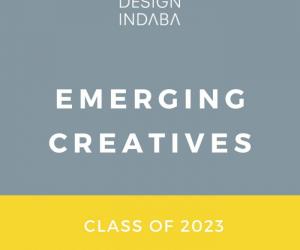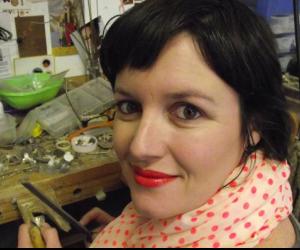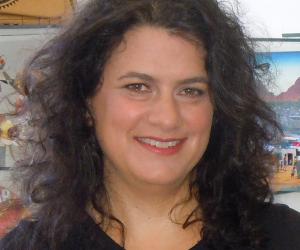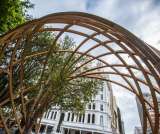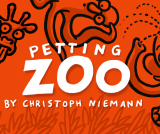Part of the Project
First Published in
The magnitude and support of the third annual Design Indaba Expo was unprecedented. This three-day curated showcase of the best original South African design attracted 15 500 visitors, including 27 international buyers and a host of local retailers.
Visitors to the Design Indaba Expo had the opportunity to see top South African designer fashion labels strutted on the catwalk all day. They could then purchase these amazing designs at the Mila Fashion boutique. Thanks to the Transnet Foundation, 48 emerging creatives showcased their designs at the Design Indaba Expo - great exposure for young South African designers entering the local as well as international market. Visitors to the Expo were amazed by the beauty and innovation represented in the "Design Made in Africa" exhibit which showcased world-class designs originating from various African countries.
International designer and Design Indaba conference speaker Tom Dixon selected the Rural Transport Prototypes as his favourite on the Design Indaba Expo floor. From the 18 beautiful objects selected by the curator panel, Tom announced the "Hawker Bench" by Tonic Design Studio as the Most Beautiful Object in South Africa, an initiative sponsored by the Department of Arts and Culture.
The curators did not just select objects for this initiative. They were responsible for evaluating each and every exhibitor, relevant to the sector in which they themselves are involved, ensuring that the standard of the event was maintained. Here is their feedback on this year's Expo:
The jewellery sector
"It is fantastic to see the growth of Expo. There was a wider representation of the different disciplines of top SA design as well as an increasing quality of exhibitors. The jewellery exhibition has grown to represent the broad spectrum of this market, from jewellery as part of the craft sector, to adornment items as individual art pieces, to designers pioneering a unique South African style in a variety of precious and non-precious materials as well as fine jewellery designed in gold and diamonds."
Jennifer Fair, export entrepreneur and owner of Africa Fair
"I think that the huge growth in the jewellery sector of the Expo is a very encouraging reflection of an increasing interest in the work of contemporary South African designers. It was very exciting to see such a broad range of high-quality and original jewellery together under the same roof. The Expo was an amazing opportunity for the jewellers to show their work to a really big audience, as well as to interact productively with each other. The fact that there was an emphasis on hand-made and creative work, and that the jewellers were there representing themselves, made it a great platform for contemporary jewellery in this country. I think that the Expo as a whole is becoming an important showcase for what creative South Africans can produce, and is a real highlight on the design calendar."
Geraldine Fenn, contemporary jeweler
Industrial and product design
"Judging the Most Beautiful Object in South Africa at Design Indaba Expo has defined, for me, the true essence of what is emerging in design in this country. This contest revolves around the word 'beauty' and indeed, one may argue why the organisers of Design Indaba did not set the judging for 'Best DESIGN in South Africa'?
"This was an interesting conundrum for me, because being an industrial designer, I am used to judging product design by defined criteria of form, function, cost, durability, aesthetics, ergonomics and manufacturability. To judge 'beauty' however, adds a completely different dimension to the word 'design'. For starters, 'beauty lies in the eyes of the beholder' as the saying goes, where emotional and psychological themes come into play and where the 'objective' gives way to 'subjective'. Beauty is about symbolism and is different to 'design' in that it gives 'meaning' to products. What the objects at the Expo presented was a new African expression of beauty and to understand this, one should look at the antonym of beauty. This would be 'ugly'. South Africa's past was consumed by 'ugly' products and 'ugliness'. I find it difficult to think of one 'beautiful product' from our oppressive past. But at the Expo, one could not help but be moved by this display of a new, emerging African beauty. It is raw, but beautiful.
"What seems to be emerging is a kind of unique African movement where function follows form and a definite sense of 'freedom' is expressed. The story that these objects tell us is that South Africa is starting to express a design identity and when the lines of this identity and expression become more defined and refined, the world is going to experience unique South African design and talent as never seen before."
Bernard George Smith, CSIR
Craft
"After being involved with Design Indaba Expo as a curator for the past two years, and as an exhibitor since its inception three years ago, it was wonderful to see how the Expo, the calibre of exhibitors and the number of local and international buyers have grown in leaps and bounds. This not only is a reflection of the positive vision of the Design Indaba team, but is also a pointer that our local craft and design sector is starting to capitalise on the diverse talent that abounds in South Africa. The craft exhibitors showed an innovative use of recycled materials. This, and the number of established and emerging craft businesses focused on income generation for the unemployed, can only bode well for our collective futures. Design Indaba and the Expo is fulfilling its aim of giving local creatives a platform where they can grow wings, to fly and be discovered by the rest of the world. Design Indaba rocks!"
Marisa Fick-Jordaan, Zenzulu
"This year's Design Indaba Expo felt like coming home, after a long journey - to an adolescent child. There was a lot that was familiar but there was also a lot that was new. I got this very strong feeling that we are growing up and settling down; that we're finding our own voice and identity in the world - and the market place.
"The Expo hall itself was an easy space to be. My senses weren't assaulted in the same way as with other shows and so it didn't drain me of energy, but energised and inspired me.
"In the craft sector, there were some really beautiful products, some surprising new ones, and an interesting use of materials both old and fresh. And the old faithfuls. It was definitely not a homogenous space but I still came away feeling that I'd experienced our South African personality. It was very gratifying to see the growth in the number of individual stand-holders and for us in the craft sector to see the 'spillage' of things made by hand into other niche markets like fashion, jewellery, homeware…
"The Expo is getting better each year. And so are we... I experienced the event as a tangible manifestation of the hard work of many people over the last decade (plus) to grow the local creative industries and to show how design can make a difference.
"But I also think we need to wake up to the fact that design is not just about aesthetics and the pursuit of the most beautiful chair, handbag or necklace. I am concerned that we are just getting caught up in a treadmill of conspicuous consumption, driven by the insatiable demand for new products made by the wealthy consumers of the developed world, who have loads of disposable income.
"While the spin-off of this, for us, is undoubtedly more businesses, more jobs, more income and economic growth, what about the impact on our environment? What about design making a difference to quality of life in the developing world? In this context it was especially gratifying to see the Cape Town Partnership Social Housing Project and the designs for rural transport solutions arising from the Design Institute's programme with Cape Peninsula University of Technology students.
"We are at the tip of a continent of 800 million people and there are so many day-to-day challenges that can be faced with good design - from housing, to energy, to transport, to cooking. How are we training designers and the creative industries to contribute to improving the quality of life?"
Erica Elk, CCDI
Interiors
"It was exciting to see so many different disciplines present from all over the country. The quality and design sensibility of the crafters has improved tremendously and shows real promise of being sustainable. I take my hat off to the exhibitors who have persevered in the trenches of local manufacturing and proved that we can do it all."
Gerard Back, Mila Fashion
Fashion
"The Design Indaba Expo asks and answers the question: 'What is South African fashion?'
"The 14 quintessentially South African fashion designers were very well received at the 2006 event, with bumper crowds showing their appreciation. The audiences often responded with spontaneous applause to the innovative designs on the runway.
"The Expo fashion shows give South Africans an opportunity to create, showcase, access, explore, discover, investigate, debate, criticise and identify a unique South African fashion identity.
"No doubt, the post-Apartheid aesthetic is developing at a rapid pace and we look forward to many more Expos."
Jan Malan, Jan Malan Umzingeli
Architecture
"The use of the volume was timely and quite architectural and gave the halls a much fuller sense of space and hence event. I would not have changed a thing except for a wider range in the fashion sector, and even more edgy design. The architectural section was well done but still elitist in that and did not capture all of what's out there - maybe energy and sustainability should be a stronger focus next time around what with all the electricity blackouts and the real crisis we face."
Mokena Makeka, architect Graphic Design
Graphic design
"The various elements of the Design Indaba - from the presentations to the Expo - are like the words of a text. Individually they may have different meanings, but collectively they convey a single message. And for me that message is the same message that was conveyed by Albert Einstein - that we use only five per cent of our brain. I see Design Indaba as the Research and Development Department for South African design. It is not just about what has been done by others here and abroad. No, Design Indaba is not a history lesson, but a source of inspiration for scores of designers. It challenges them to surprise us and titillate us into a future not yet imagined. Next year I'll be on the lookout for the work of those designers who are brave enough to venture into the sixth percentile of their brain."
Muzi Kuzwayo, Director of King James Advertising
"The Transnet Foundation Emerging Creatives stand at the Expo yet again managed to intrigue, challenge and stimulate the mind relentlessly. It has become the perfect place to find talent and new thinking. The Emerging Creatives stand is like good wine, it just gets better with age! With a return to craft and detail, students are starting to do stuff that employers get excited about."
Veejay Archary, Black Branding

















